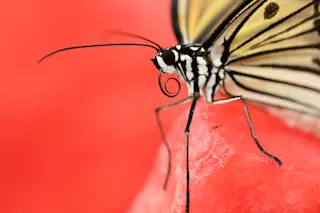Last month saw the bombshell report that a tiny species of hominid lived on an Indonesian island 18,000 years ago. Since then there has been a dribbling of follow-up news. Some American paleoanthropologists have expressed skepticism, pointing out that while bones from several small individuals have been found, only one skull has turned up. The skull was the most distinctive part of the skeleton, with a minuscule brain and other features that suggested it was not closely related to our own species. The skeptics suggest that these hominids were actually modern human pygmies, and that the skull came from an individual who suffered a genetic disorder called microcephaly.
In Friday's issue of Science, Michael Balterreports that a prominent Indonesian anthropologist, Teuku Jacob of Gadjah Mada University, thinks Homo floresiensis was a microcephalic. He has taken possession of the fossils to study them, and this has a number of researchers worried. ...













